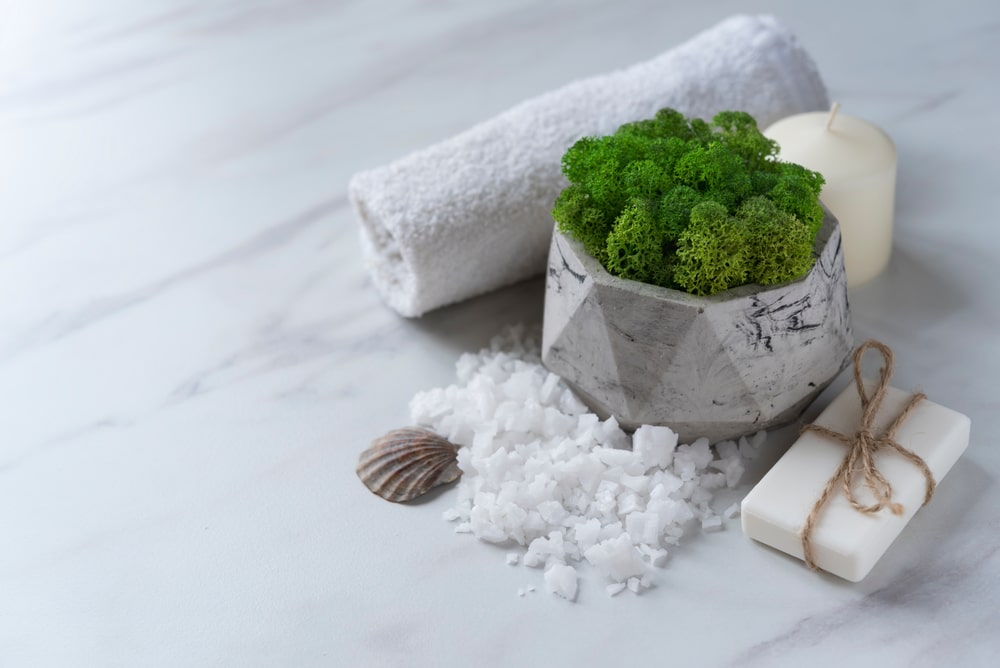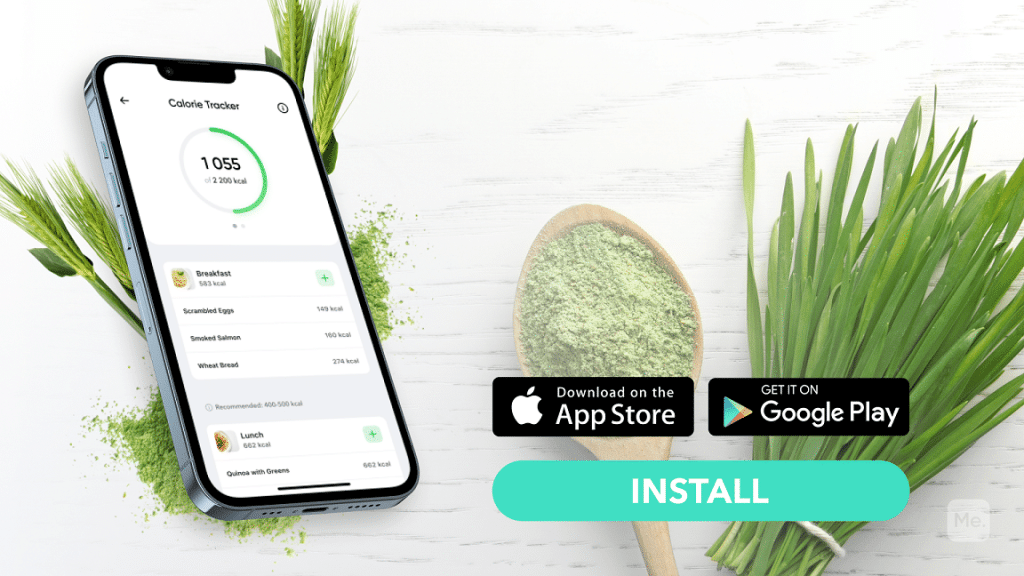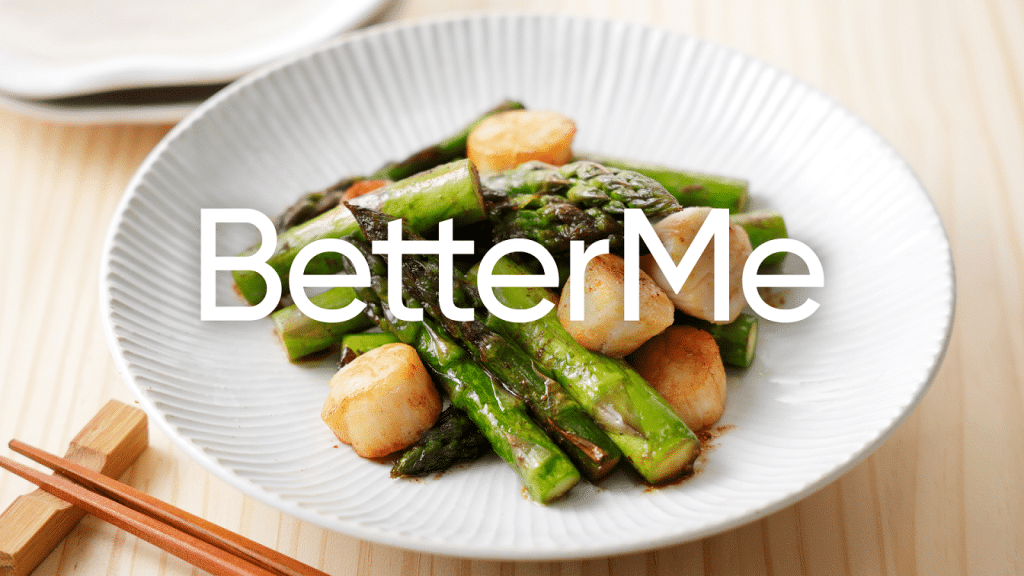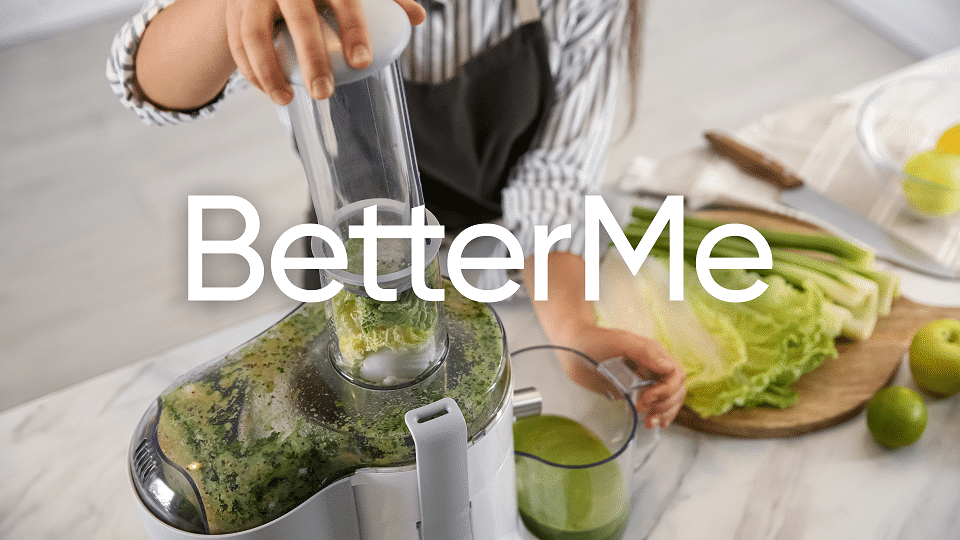You may be surprised at how you can hardly keep up with weight loss trends. This is because each year there is always a new diet trend. For example, there was the celery juice trend, cabbage soup diet, lemon juice, etc. However, one trend that has remained consistent over time is the consumption of sea moss for weight loss. You may have seen or heard of influencers jumping on this diet trend in the hopes of shedding a few pounds. Question, does sea moss help with weight loss? If so, to what extent and is it safe? These are among the questions we will be answering today. Please keep reading to discover what science says about sea moss and weight loss, plus its nutritional value, potential benefits, and risks.
What Is Sea Moss?
Sea Moss is also referred to as Irish moss or red seaweed. It is a type of seaweed that grows year-round in inlets and tidepools. This type of algae is native to the Atlantic shorelines of North America, the Caribbean Islands, and Europe (1).
Its popularity has increased as more and more people learn about its possible benefits and nutritional profile. For example, it has been claimed to improve digestive health and support the immune system.
Nutrition
One of the many reasons sea moss has become popular in the kitchen is its exceptional nutritional profile. Evidence shows that it is packed with nutrients, hence has been categorized as a superfood (1).
Additionally, it is also considered an excellent vegan and gluten-free food option. This has made it a favorite amongst individuals following a vegan and gluten-free diet. But what of its nutritional profile? Well, sea moss is considered a superfood for good reasons.
First, it is loaded with nutrients such as zinc, calcium, magnesium, chromium, and vitamins B2 and B12 (5). Additionally, it has a low-calorie count. The U.S. Department of Agriculture (USDA) database reveals that a 2 tbsp (10 g) serving of sea moss provides 5 calories (8).
Here is an overview of other nutrients you will get from consuming a 2 tbsp serving of Irish moss (8):
- Protein- 0.15 g
- Total fat- 0 g
- Total carbohydrates- 1.23 g
- Fiber- 0.13 g
Read More: Sea Moss For Weight Loss: Does It Work?
Sea Moss And Weight Loss: What Does Science Say?
If there is something we have learnt over the years, it is that not all diet trends aid weight loss. Yes, celebrities could be advocating for them, but that does not mean they will help you drop a dress size down. That said, is the sea moss diet trend effective for weight loss? This remains the dominant question asked by most weight watchers.
Several scientific reasons show an individual can use sea moss for weight loss. They include:
-
Low-Calorie Count
We know that you have to create and sustain a calorie deficit for weight loss. That means consuming fewer calories than our body burns. For this to happen, it helps to follow a low-calorie diet.
You have to look for low-calorie foods to help you create such a diet plan. For example, science has found that sea moss has a low-calorie count, regardless of the servings you use. The recommended serving size of 2 tablespoons of sea moss contains only 5 calories (5). That means consuming sea moss can help you maintain a calorie deficit for weight loss.
-
Fiber Content
The second reason sea moss is believed to promote weight loss is that it contains decent amounts of fiber. Fiber is an essential nutrient in weight loss. That is because it makes you feel full for longer after eating, helping you eat less. And as a result you consume fewer calories than your body burns.
Sea moss contains soluble fiber that keeps your gut bacteria healthy and supports digestive system function. It also keeps you full longer, helping you create and maintain a calorie deficit (5).
-
Carrageenan Content
Sea moss has also been suggested to promote weight loss due to its richness in carrageenan. Carrageenan is a biological macromolecular sulfate polysaccharide mainly isolated from marine red algae (3). Please note that sea moss is an alga, also known as red seaweed.
A 2021 study animal study showed that κ-carrageenan supplementation in mice reduced weight gain and reduced the increases in fat mass and adipocyte size in mice fed a high-fat diet (3). The κ-carrageenan also seemed to have beneficial effects on the gut microbiome of the mice.
Nevertheless, human studies are still necessary to validate this theory and determine to what extent carrageenan content in sea moss might combat weight gain in humans.
-
Anti-Obesity Properties
Other preliminary studies have also found that sea moss might aid weight loss due to its potential anti-obesity properties. For example, a 2021 review of in vitro and animal studies described findings that macroalgae consumption reduced body fat accumulation and other obesity features. These include insulin resistance, dyslipidemia, and fatty liver (2).
Additionally, the review suggested that these effects were not due to reduced food consumption since only a few studies have reported such effects (2). So does sea moss help with weight loss? We need human studies first to determine whether it is safe and effective in humans and in what dosage, delivery method, etc. Humans are more complicated than mice and it is unlikely that any particular substance is going to emerge as a magic weight loss cure.
Keep in mind that weight loss also calls for a healthier lifestyle. With this in mind, aim to adopt healthy lifestyle behaviors such as getting enough sleep, exercising, drinking enough water, and managing stress levels.
Lean and toned up body isn’t just a far-fetched fantasy. Check out the BetterMe app and watch it propel your weight loss journey into high gear!
-
Fucoxanthin
Fucoxanthin is a marine carotenoid found in macroalgae and microalgae. It has shown some promising potential anti-obesity properties in the lab, which may help prevent weight gain (4). The brown-seaweed-extract carotenoid is thought to be able to help with weight loss by influencing fat metabolism.
-
Sea Moss And Bladderwrack Weight Loss Properties
Both sea moss and bladderwrack are believed to aid weight loss due to their sufficient amount of iodine. Iodine is necessary for the production of thyroid hormones, which regulate metabolism (1). As you can guess, an increased metabolism helps you burn more calories. If you burn more calories than you consume, you report a decrease in weight.
Health Benefits Of Sea Moss
There are many reasons why most people consume sea moss besides promoting weight loss. Some of them include:
-
Better Thyroid Health
Iodine is essential for the production of thyroid hormones. Luckily, Irish moss is rich in iodine, which helps your thyroid function properly and prevents metabolic issues (10). Additionally, it prevents iodine deficiency (10).
-
Better Gut Health
Sea moss has prebiotic effects that improve the health of the gut microbiome. Additionally, it contains fiber and oligosaccharides like carrageenan. These support gut health by feeding healthy bacteria in the intestines (10).
-
Improves Immune Functioning
Your gut is connected to the immune system. That means that improving gut health also improves your immune system. Typically, you are asked to consume a diet rich in fiber and prebiotics for a healthy immune system. Luckily for you, these nutrients can be found in sea moss.
-
Reduced Cancer Risk
Some compounds in sea moss like fucoxanthin have shown anticancer properties which may fight against particular markers of colorectal cancer and its risk factors (10).
-
May Improve Blood Sugar Control
Evidence supports sea moss consumption as part of a healthy, balanced diet which helps manage blood sugar. This is because it contains compounds like fucoxanthin and carotenoid that may help reduce insulin resistance and improve blood sugar control (9).
Similarly, sea moss can help with blood sugar control due to the high fiber content which slows down digestion.
-
May Enhance Cardiovascular Health
Like other seaweeds, sea moss is rich in omega-fatty 3 acids vital for better heart and cardiovascular functioning. Additionally, it is said to enhance heart health by improving cholesterol balance and acting as a blood thinner. Consequently, this could reduce heart disease risk (9).
Read More: Eating Seasonally: What Does It Involve And What Are Its Benefits?
-
Supports Muscle And Energy Recovery
Research also suggests that sea moss may help your body recover after a workout and relieve fatigue (10). This may be due to the total proteins or specific amino acids present in the seaweed which help in the repair and recovery of your muscles (10). But again, you must also remember to take some days off when exercising. These rest days allow your muscles to replenish depleted glycogen and reduce fatigue. This helps prepare your muscles for the next workout.
-
Has Neuroprotective Effects
The red seaweed also has antioxidant properties like other algae that may protect against neurodegenerative disease. Research in roundworms found that an extract of sea moss protected against markers of Parkinson’s Disease (10). Of course, more research is needed to determine whether this has any implications for humans.
In addition to these benefits, there are also others linked to sea moss consumption. However, they still need more research to back them up. Some of these possible benefits include (10):
- Supporting fertility
- Improving skin and hair health
Sea Moss Side Effects
Unfortunately, consuming this red seaweed also has drawbacks, even in supplement form. That is why you must consult first before adding it to your diet plan. Some of these cons include:
-
Too Much Iodine
Although sea moss has iodine that can help with thyroid health, it has varying levels depending on your servings. This means that you risk getting too much iodine, which puts you at risk of iodine poisoning and thyroid problems (10). Stick to the recommended serving size of 2 tbsp (10 g) per day.
-
Contamination
Seaweed and algae are at risk of contamination from the environment. For example, they can be contaminated with metals and minerals like lead, mercury, and arsenic. These metals are harmful to your body and can result in adverse health problems.
-
Negative Effects Of Carrageenan
Carrageenan is converted into degraded carrageenan or poligeenan under certain circumstances. This form is toxic and may lead to different health problems (6). Even so, there is lack of scientific evidence showing if your body can convert carrageenan to poligeenan. Be that as it may, some types of seaweed have been shown to naturally contain poligeenan (6).
How Do I Incorporate Sea Moss Into My Diet?
Now that you know sea moss might be effective in weight loss, you may be interested in learning a few ways of incorporating it into your diet. The most common way most people consume sea moss for weight loss is by making it into a gel.
Once you get this gel, you can add it to your smoothies, juices, stews, soups, and baked goods (5). Similarly, you can also eat it raw or have a spoonful of the gel. If you have powdered sea moss, you can consume it by sprinkling it in yogurt or cereal.
Alternatively, sea moss can be added to ice cream or blended with spices for different flavorings. Here is an example of a recipe showing how you use sea moss to make a smoothie.
Looking for a way to break the vicious cycle of weight loss and tone up all the jiggly parts? Watch the extra pounds fly off and your muscles firm up with the BetterMe app!
Recipe: Sea Moss Banana Smoothie
The following recipe is vegan-based. So, it would be perfect if you are following a vegan diet. Be sure to get more details about it from the One Green Planet website (7).
Ingredients (7):
- 2 frozen bananas (preferred but not necessary. You can use regular temperature bananas)
- 1/4 cup organic hemp seeds
- 2-3 pitted dates
- 3 tbsp. prepared sea moss (follow the instructions on the sea moss package on how to wash, soak, and blend your sea moss)
- 3/4 tsp. cinnamon
- 1 tsp. vanilla
- 1/4 tsp. nutmeg
- 3-5 black peppercorns
- 2 pinches cardamom
- 6-8 ice cubes
- 1.5-2 cups filtered water (the water should be less than the contents of the blender)
- Pinch of sea salt
- 1/2 tsp. jaggery (optional)
Preparation (7):
Add all ingredients to a blender, and then leave the water for last. Add just enough water as the contents in the blender. You will not get a thick and fluffy smoothie if you add too much water. With this in mind, be cautious about the amount of water you add to get your desired puree consistency.
How Do You Make Sea Moss Gel?
Most people are in the dark on how to make this gel. So how do you do it? Easy! All you need is dried sea moss. With that, all you need is to follow these steps (10):
- Soak the sea moss in water overnight.
- Rinse the sea moss the next day and add it to a blender. Add a cup of clean water (note that the water you add depends on the amount of sea moss you have).
- Blend the mixture until smooth.
- Store it in a sealed container, then put it in the fridge to gel overnight.
How To Cook With Sea Moss?
You can cook different dishes with sea moss, as seen above. However, there are several precautions that you need to take when cooking with sea moss. First and foremost, if you want to cook with this red seaweed, you must wash it and then soak it in cold water for a full day.
During these 24 hours you must frequently change the water out. As a result, you can not guess when to cook with sea moss. Instead, you know it is ready to cook when it doubles in size and becomes white and gelatinous (5).
Once you notice this, you can use it to make the dish you want. However, it can only be used after blending it. Blend until you get a thick, honey-colored liquid. Alternatively, you could prepare the sea moss gel by following the steps mentioned above.
How Much Sea Moss Should You Take Daily?
It is natural to want to consume more of the foods that have been proven to aid weight loss. Perhaps the thought is that consuming more of them helps quicken the results.
But unfortunately, that is not the case. Consuming sea moss has its pros and cons, as seen above. Considering this, it would be best if you stuck to the recommended limit. But what is it?
The FDA recommends that individuals consume less than 225 mcg of iodine daily. Sea moss is rich in iodine. That means you have to be cautious about the amounts of sea moss you consume.
The recommended limit is one serving of 2 tablespoons (10 g) per day.
Who Should Not Take Sea Moss?
Not every individual is fit to consume sea moss for weight loss. For example, individuals using blood-thinning medications are advised to avoid sea moss because it may have anticoagulant or blood-thinning properties (1).
Even so, you should never stop taking medication without consultation. Always talk to your doctor if you think your diet affects your medication, or vice versa.
Additionally, pregnant and breastfeeding women have also been advised to avoid this red seaweed. That is because no specific research has been conducted showing the effects of red seaweed consumption in pregnant and breastfeeding women.
The Bottom Line
Sea moss, also known as Irish moss or red seaweed, is algae grown in the Atlantic shorelines of North America, Europe, and the Caribbean Islands. A recent diet trend shows that sea moss could promote weight loss.
Preliminary scientific evidence suggests a potential relationship between sea moss and weight loss. That means that this red seaweed could promote weight loss for several reasons. First and foremost, it is because of its low-calorie count.
Additionally, it is rich in fiber, carrageenan, and fucoxanthin and contains anti-obesity properties. Most of the potential benefits are based on test tube or animal studies, so more research is needed to establish its implications for humans. Be sure to talk to your doctor first if you are interested in consuming sea moss for weight loss.
Get your personalized
meal plan!
DISCLAIMER:
This article is intended for general informational purposes only and does not serve to address individual circumstances. It is not a substitute for professional advice or help and should not be relied on for making any kind of decision-making. Any action taken as a direct or indirect result of the information in this article is entirely at your own risk and is your sole responsibility.
BetterMe, its content staff, and its medical advisors accept no responsibility for inaccuracies, errors, misstatements, inconsistencies, or omissions and specifically disclaim any liability, loss or risk, personal, professional or otherwise, which may be incurred as a consequence, directly or indirectly, of the use and/or application of any content.
You should always seek the advice of your physician or other qualified health provider with any questions you may have regarding a medical condition or your specific situation. Never disregard professional medical advice or delay seeking it because of BetterMe content. If you suspect or think you may have a medical emergency, call your doctor.
SOURCES:
- An Overview to the Health Benefits of Seaweeds Consumption (2021, ncbi.nlm.nih.gov)
- Anti-Obesity Effects of Macroalgae (2021, ncbi.nlm.nih.gov)
- Effect of κ-carrageenan on glucolipid metabolism and gut microbiota in high-fat diet-fed mice (2021, sciencedirect.com)
- Fucoxanthin: A Promising Medicinal and Nutritional Ingredient (2015, ncbi.nlm.nih.gov)
- Health Benefits of Sea Moss (2020, webmd.com)
- Irish Moss: Health Benefits, Nutrition, and Uses (2020, webmd.com)
- Sea Moss Banana Smoothie (2020, onegreenplanet.org)
- Seaweed, irishmoss, raw (2019, fdc.nal.usda.gov)
- Top 5 health benefits of sea moss (2021, bbcgoodfood.com)
- What to know about sea moss (2021, medicalnewstoday.com)














